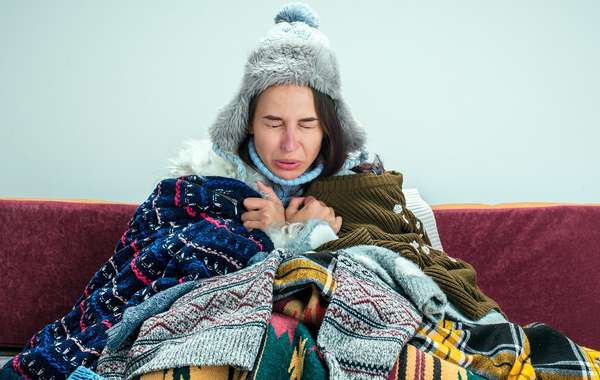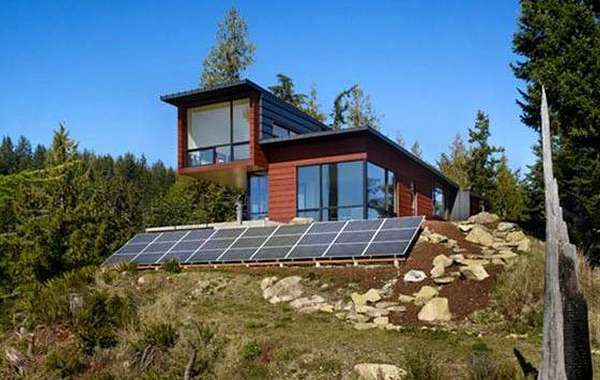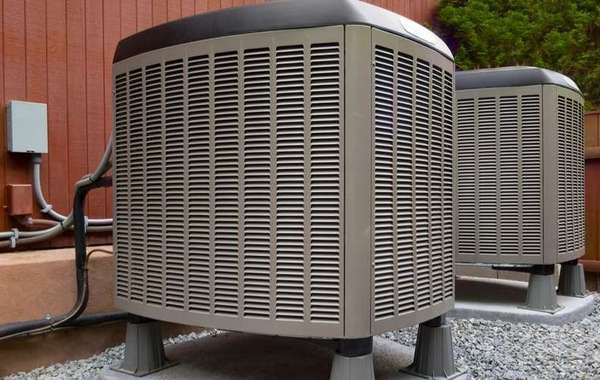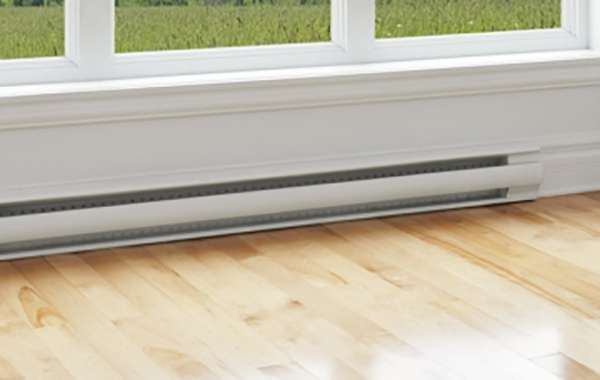Having a backup heat source that can operate without electricity should be an important consideration for many homeowners in colder climate zones, especially those who rely on a heat pump or electricity as their primary source of heat.
In this guide, we will explore the various factors that can influence the need for a backup heat source, including the efficiency and reliability of the heat pump, the climate in which the home is located, and the availability of alternative sources of heating in case of a power outage.
It is important to consider the efficiency and reliability of the heat pump itself. Heat pumps are generally very efficient, with some models achieving annual heating efficiency ratings (AFUE) of up to 300% or beyond. To express that in layperson terms - electric resistance heat has an efficiency rating just under 100% due to minor line loss, so a heat pump can potentially offer you 3 times the heat as electric radiators for the same price.
However, depending on the age of your heat pump, they can be less efficient in very cold temperatures and may struggle to maintain a comfortable indoor temperature as the outdoor temperature drops below freezing.
If you are unfamiliar with how heat pumps work, they are explained in detail here. But before deciding which heat pump is best in 2023, read this guide, and, to understand the heat pump ratings and what this means for the efficiency of a heat pump, see here.
If you have a heat pump that is prone to breakdowns or is an older model with a history of poor performance in cold weather, I'd probably stop reading now and skip directly to the section on wood stoves, wood burners or wood pellet stoves as backup heating for power outages. That's going to be the best way to future proof your home and ensure heat security for your family in regions that suffer extreme cold weather events. Otherwise, read on!
Do heat pumps stop working in extremely low temperatures?
Traditionally, at maximum capacity, it was generally accepted that a heat pump could create as much as a 30°F difference between the inside and outside temperature. That means if it’s 38°F outside, a home’s interior could be a cozy 68°F inside. However, as outside temperatures drop below 35°F, the efficiencies of older heat pumps would always drop with it.
If they were fitted in an older unit, at a certain point, the heat pump will switch to an auxiliary heating source such as an electric coil, propane or natural gas burner. This is why many people think 'the norm' for all heat pumps is to specify a backup heat source - but if installing a new heat pump system in 2023, choose on of the best performing ones and keep reading!
Older heat pumps that were the primary heating system for a home would often include a backup heat source, but that may rarely if ever have been used. This may be the case in more temperate climates, or with high performance homes that do not need much energy to maintain an ambient temperature, like a home that has significant solar gain or extreme levels of insulation. I mean, is it even possible to have too much insulation in walls or roofs?
The good news is that, in most climates, modern cold weather heat pumps no longer need this type of backup heat source to supplement the heat being produced by the heat pump itself. If the power remains on, the better types of heat pumps can operate succesfully at temperatures as low as -15°F (or -25°C), so this isn't what we are referring to here.
"The question we are looking to answer is whether we feel that it is prudent to have a secondary heat source other than the heat pump, and one that doesn't rely on electricity in case of power outages or extreme cold weather."
Unfortunately these type of extreme cold weather events are increasingly frequent, causing severe damage and even loss of life across the US and Canada. According to the U.S. Energy Information Administration, 2020 was a record-setting year for power outages with the average American experiencing eight hours without power for the year, compared to a little over three hours without power in 2013. Extreme weather events, like hurricanes and ice storms, were often the culprit.
The bad news with any form of home heating, is that if the fuel or energy it needs to use to produce heat becomes unavailable, like with electric heat pumps during a power outage, then they will stop heating and the home will start to cool down. This is not just inconvenient but can be potentially deadly, depending on a number of factors and variables when making the decision about whether to install a backup heating system.

Preparing for a power outage - trim trees prevent damaging power lines
Whether it’s a blizzard, ice storm or even just strong winds, the chance of a power outage goes up significantly during the winter months, so prevention is better than cure. It’s important to have a plan in place for situations in which a home and it's occupants may face an extended period of time without power. Likewise, even when power does come back on relatively quickly, that doesn’t necessarily mean the furnace or heat pump will be back up and running right away.
For safety, have a good look around the exterior of your home and surrounding area for branches that may encroach on power lines. Speaking from experience, we once endured three very cold days without power, patiently waiting for Hydro to get the power back on to our area. Only afterwards did we find that the problem was a fallen branch on our own property, something that Hydro won't generally deal with.
More than half of all power outages are caused by falling trees and branches, so this is a good thing to check to avoid any surprises over winter. As a property owner, we’re responsible for keeping the service wires to our property clear of vegetation. Branches rubbing on our service wires can wear through the weather coating, and may also cause home electrical appliance damage.
If you do see any hazards to the main power line, your local power provider likely has an online reporting page where you can upload photos of trees you think may be dangerous, as it is in their interest as well to deal with them before they cause an outage. Check here for other useful winter preparation tips.
Staying safe near power lines
Be sure to stay safe for jobs like trimming trees away from cables, cleaning gutters, or doing home renovations which might mean getting close to nearby power lines. It's important to remember that it isn't only our body that needs to stay 10 feet away (3 meters). Any branches being trimmed, the tools being used, and even ladders all need to stay clear by at least this distance to eliminate all possibility of arcing.
If in any doubt about handling ladders, power tools, or being too close to cables - look up a qualified local professional and let them use their experience to fix problems safely and without causing even bigger ones! Here's a visual representation of what that safe working distance for overhead power lines looks like.

How to survive a power outage
Prepare before a power outage
Before a winter storm rolls in, be sure to prepare well in advance. Follow all the usual good advice like checking that flashlights work and have spare batteries, and that backup heating and fuel are working and available as well as warm clothing. Also make sure that all mobile phones and laptops are fully charged, and open the websites for power outage maps just in case, as well as making sure that someone in the household knows how to activate their mobile hotspot.
Then if the power goes out
Dress warmly, keep outside doors and windows closed, and look to keep one room as the primary warm survival space. As my Grandma (who came through 2 wars) taught me:
"To prepare for the worst is to get to enjoy the best"
To conserve heat, close off unused rooms and block the bottoms of doors with towels. Only use 911 for true emergencies, and check regularly with the power company for updates. Conserve battery power by only using one phone at a time and putting it into battery saver mode, turning off the hotspot when unecessary. Group games when with family can keep spirits up, and wrapping an extra family member up in a duvet on the couch helps share bodily warmth.
Beware of the 'silent killer', carbon monoxide
Take extra safety precautions with backup heat sources, alternative cooking stoves and generators, and make sure not be running unvented sources of carbon monoxide inside the home (eg. charcoal stoves, propane or butane camping stoves, free standing petrol, gas or paraffin heaters, generators, gas cooktops or ovens).
While studying major U.S. power outages between 2007 and 2018, researchers found that carbon monoxide poisonings spiked during those disruptions, And, in 2021, when a winter storm swept across Texas causing a massive power outage, more than 1,400 people reportedly ended up in the emergency department and at least 11 died of carbon monoxide poisoning. And certainly use flashlights as much as possible instead of candles to avoid the risk of fire.
Find our full resources on how to survive a power outage in cold weather here. Also, and although this may sound obvious to many, don't run a gas powered vehicle in a closed garage space to try to keep warm... (too many people have unfortunately tried this).

Is a backup heat source a good idea with a heat pump?
The most important thing to help make a good decision is to consider the individual circumstances of the home and household. The local climate in which the home is located is one important factor in deciding whether to invest in a backup heat source.
In areas with milder winters and rare cold weather events, a heat pump on it's own may be able to provide reliable, efficient heating throughout the winter months with minimal need for a backup source of heating.
However, in areas with long and very harsh winters where prolonged periods of -15°F (-25°C) are not uncommon, a heat pump may struggle to keep up with heating the home. This is especially true if the home is only built and insulated to building code minimums. In such cases, having a backup heat source that can truly operate without electricity can provide peace of mind and ensure that the home remains comfortable and warm even if the heat pump fails or the electricity goes out.
The main factors to consider when deciding whether to install backup heating in a home with a heat pump or electric heating are:
- The climate zone where the home is located (see map here) - does the area get extreme weather events or is it likely to in the future?
- The standard of the home construction - hopefully it's better than minimum code requirements, the airtightness and insulation levels, the thermal mass of the building - in other words, without added heat, how long will the home stay warm inside?
- How remote is the home - if it were to be cut off from outside resources or help, how long might it take help to arrive?
- On a general basis, how vulnerable are those that the home accomodates? It is especially important that the very young, the very old, and those with mobility issues live in homes with future proofing measures and heat security, or have a backup plan in place for safety.
- How well-prepared are the residents for an emergency situation? Is there a good stock of food, warm clothing, a reliable vehicle with fuel, 4 x 4 and winter tires, a driver with lots of winter experience (and who can make a call on whether to go or stay)?
Only the homeowner can answer the above and take a final decision on whether the extra expense of a backup heat source is worth it, and that added expense will depend on which backup heating system is chosen.
How about natural gas as a backup heat source in a power outage?
Having considered the efficiency level and reliability of the heat pump and the climate in which the home is located, it is also important to consider the availability of alternative sources of backup heating in the event of a power outage.
If the home is connected to a natural gas line, it might be tempting during a renovation to keep an old gas furnace or boiler, or even an old oil fired unit, to serve as an emergency backup heat source. However, if the electricity supply is interrupted during a power outage, a gas furnace or boiler won't actually operate as they also rely on electric to run fans, pumps and thermostats and ignition systems.
Natural gas fireplace inserts can also be problematic, unless fitted with an intermittent pilot ignition (IPI) valve system which will remain operational during a power outage. When choosing a fireplace with an IPI valve system, note that that it needs batteries in the system’s battery backup in order for the fireplace to work if the home suddenly loses power during an outage. So add 'checking batteries' to your winter preparation.
We also hear of people running natural gas stoves and ovens for heat and cooking during a power outage. While this is a possibility, it isn't recommended unless absolutely necessary and by also ventilating the area and having functioning carbon monoxide detectors due to rising awareness of the health risks of gas cooktops and the very real risk of carbon monoxide poisoning during a power outage as mentioned above.
Even when turned off, gas stoves and cooktops can be dangerous - leaking harmful chemicals like nitrogen dioxide, methane and cancer-causing benzine into homes. Over 40 million US and Canadian households can mitigate or eliminate the risks from cooking with gas by switching to ENERGY STAR rated electric stoves and ovens. so keeping them just because they may work when the power is out isn't what we would call a valid reason.

Is a wood burning stove or wood pellet stove a good option as a backup heat source during a power outage?
An accurate answer to this question has to be, 'that depends'. Personally I'm a fan of a cozy wood fire, and I find that the combination of radiant and convected heat is a pleasant one. I don't mind the whole saga of cutting, chopping, splitting and stacking the logs because I'd rather do that to keep fit rather than go to a gym. If splitting and stacking wood isn't your 'thing', or you live in an area where wood stoves are banned or firewood isn't easily available, then that likely isn't the best choice of backup heat.
I'm also both fortunate and unfortunate when it comes to wood burning fireplaces, as the area where I live (Vancouver BC) is in the process of regulating them (see here). Although the luck comes into play as our wood burning fireplace is grandfathered in because our home is very old for this region.
I understand that in dense residential areas air quality is important as I don't want to breath smog either, but I'm going to admit right now that if the immediate safety of my family is at risk due to low temperatures and a power outage, then I wouldn't hesitate to use my wood burning chimney. So I keep a stack outside of hot burning firewood just in case.

On the downside, wood burning fireplaces and stoves do take maintenance, they cause dust, sometimes draughts, and they can cause problems with air quality in towns and cities. But, on the upside, they do operate with absolutely no power as long as you have dry wood and a match.
A good wood burning stove provides reliable heat, light, and even a way of cooking dinner, which is probably why our ancestors all used them. All the same, if choosing to install and use a wood burning stove as backup heating, be sure to take the usual precautions. Have it installed by a licensed and insured professional, and be sure you have fucntioning carbon monoxide detectors.
Wood pellet stoves as backup heating
I'm going to cut straight to the chase in relation to wood pellet stoves and their suitability as a backup heat source. Much like the majority of gas appliances, in a power outage they don't work. However, there are a couple of notable exceptions of wood pellet stove that don't need electricity that are frankly a little 'original' (aka 'fugly' - sorry Mom).
It is worth taking into consideration that wood pellet burning stoves only use pellets that have to be purchased, transported, stocked and handled. So personally I'm not a fan, but anyone who disagrees is welcome to leave their thoughts in the comments below!
Find out more about other backup heat sources that can operate without power, such as high efficiency wood stoves or inserts.
Conclusion; install a backup heat system with a heat pump, yes or no?
In conclusion, whether or not a backup heat source that runs without electricity just in case of a power outage is needed, very much depends on individual circumstances and preferences.
For those in remote areas with frequent power outages that rely on a heat pump for the main source of heat, a simple and reliable backup heat source could be a good investment to ensure that everyone at home stays warm in the event of a power outage. However, it's important to weigh the costs and benefits of different backup heat sources to determine which option is best. And personally speaking, that means 'yes' to a woodburner as I value the peace of mind and extra comfort it brings to the home.
Now you know whether heat pumps need a backup heat source and why, learn more about efficient home heating systems for eco homes and sustainable home building in our green building guide and these pages:
Find more about green home construction in the Ecohome Green Building Guide pages - also, learn more about how to get a free Ecohome Network Membership here. |




























I'm curious why you don't mention battery backup storage in your article on auxiliary heating systems. While lithium batteries for home energy storage are still somewhat expensive, the costs are declining over the past decade and several companies offer systems viable for households. Battery backup systems allow home heat pumps to continue operating (as well as lights and phone charging) for intermittent use depending on the size of the battery system and power outage. Furthermore, battery backup systems can be integrated into home solar photovoltaic systems that provide power even when the local grid goes down. While the upfront costs are substantial, so can the costs of installing a new auxiliary heating system that may only be used a few times per year. In addition, battery backup systems aren't plagued by the problems of other auxiliary heating systems you listed in your article, including reliance of grid power, dangerous CO leaks, air quality degradation in the house and community, and maintenance and repair costs. Although you don't mention them in your article, I would add the price volatility in the fossil fuel market and climate change as significant concerns with oil and natural gas heating systems.
You make a very good point in relation to battery backup systems being a potential option for emergency auxiliary heat in a power outage, thanks Michael. I didn't include this (yet) because we would prefer to carry out in-depth research on the feasibility, cost and practicality of such a system - and the main point of the article is to help turn the tide on current misconceptions about heat pumps always needing backup heat to simply keep the average North American home warm. Searching "Do heat pumps need backup heating systems?" on Google has been a total facepalm for too long. If you happen to know an expert in the field of backup electric systems / batteries / solar systems - especially in cold climates - we would love an objective article proposal on the subject...
Robert, I know one solar/battery installer in my area that writes informative articles on their website and I will ask if they are interested. Thanks.
Yes please!
The articles that I read about heat pumps miss a very important consideration when choosing to purchase a heat pump. That consideration is the refrigerant that is used by the heat pump to transfer heat.
Currently heat pumps in North America use R410A which is 2088 times more damaging to the environment that carbon dioxide.
In a few more years R410A systems will no longer be marketed. R410A and other refrigerants will no longer be manufactured.
For my money I am seeking a carbon dioxide heat pump to ensure more efficient performance, low temperature operation and long term usability as CO2 is a natural refrigerant not a blend of man-made chemicals.
The only thing I'd like to point out, at least in Ontario, only the hydro companies should be clearing lines from your house to the pole. Attempting to do this yourself, can get you killed (2-400A is instant death). If there is branches on the line, you can call your hydro company, and they'll schedule someone to come clear them (typically at no cost). Its best to do this during non-peak periods, or before major storms/outages.